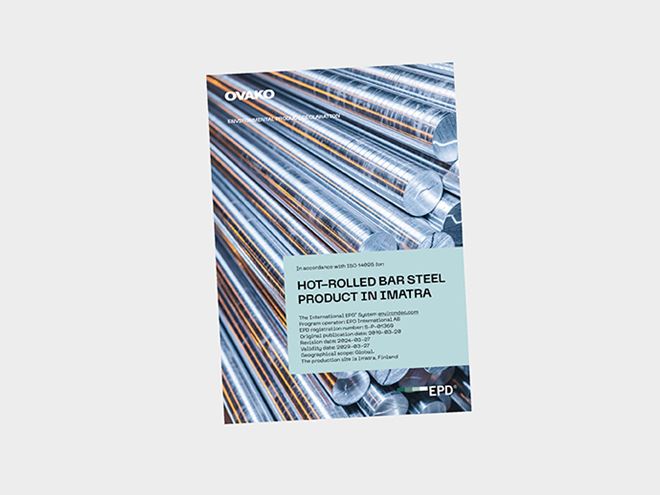Since 2015 we have reduced our relative carbon emission from our own operations by 59 % and one of our sustainability targets is to reduce carbon emmissions by 80 % by 2030.
Ovako’s goal is to achieve zero-carbon emission steel. During the period January 2022 ending April 2025, we have counterbalanced the remaining carbon emissions in production through carbon offsets. The use of offsets were gradually decreased as the company continues to invest in new technology and improve its processes. The purpose of the offsets was to reduce global carbon emissions now, thereby contributing to the transition toward a sustainable society.
Read more about our path to carbon neutrality.
One of the steel industry’s main challenges is to substitute fossil fuel when heating steel before rolling. In 2020, Ovako made a successful trial using hydrogen as a fuel in a rolling mill which proved that it is possible to use in full scale production. We therefore in 2021 initiated a cooperation with several key players in Swedish and Norwegian industry. The initiative is supported by the Swedish Energy Agency, with the shared goal of establishing industry-wide use of fossil-free hydrogen, expanding awareness of the potential of this fuel, and achieving cost-effective production, resulting in Ovako building Swedens largest fossil-free hydrogen facility in Hofors which will greatly reduce our carbon emissions from steel production.
Read more about the collaboration in the press release.


Environmental Product Declarations
An Environmental Product Declaration (EPD®) is a verified and registered document that provides transparent and comparable information about the environmental impact of products over their life cycle.
Ovako has published EPDs that cover the full environmental impact of hot-rolled steel bar from Ovako’s Hofors, Imatra, and Smedjebacken and Boxholm (Smebox) mills as well as climate declarations that shows the carbon footprint. These declarations are based on a Life Cycle Analysis of hot rolled bar from cradle to gate. They take account of all the recycled scrap and alloying elements, transport, energy and waste products in the production process as well as the footprint of incoming goods and services and the full yield loss in production.
The EPDs covers areas such as greenhouse gas emissions, water scarcity, acidification, tropospheric ozone and abiotic depletion and eutrophication. They provide data on the average steel composition Ovako produce and depending on customer needs, the values for a specific steel product, that reflect any specific alloying variant can be made available on request. For more information see description of the Carbon Footprint Calculator below.
The EPDs enable comparisons between the global average and Ovako’s carbon footprint from cradle to gate. This information helps customers to make accurate calculations and informed decisions about their steel purchases. The EPDs shows that Ovako’s products have an 80 % lower carbon footprint than the global average for hot-rolled steel products.
The Carbon Footprint Calculator
The Carbon Footprint Calculator is based on the life cycle analysis of an Ovako hot-rolled bar while also considering the added carbon dioxide impact generated from further processing and the specific alloying variant. This provides customers with data that enables them to compare products and establish the footprints for their own products. They will also be able to supply their own customers with vital data to make meaningful comparison between suppliers. The Carbon Footprint Calculator was developed with the assistance of Swedish research institute RISE.






